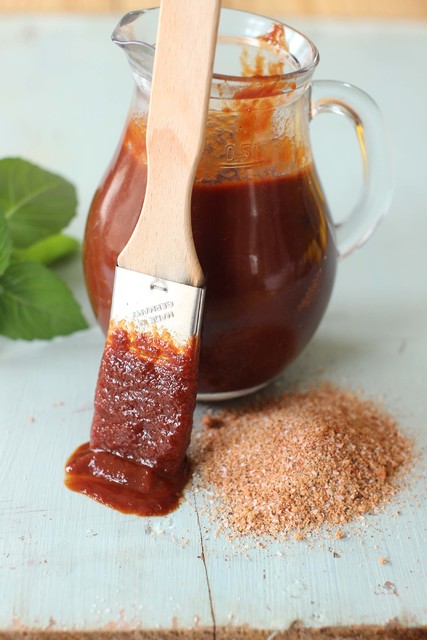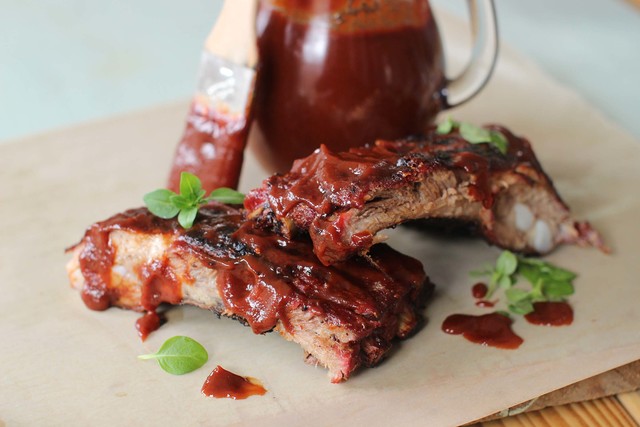Barbecue sauce is a very personal thing. For some, it means a thick, sweet red sauce. For others, it is mustard-based. For those who grew up in North Carolina like I did, it’s vinegar-based. Regional differences aside, these days barbecue
Barbecue sauce is a very personal thing. For some, it means a thick, sweet red sauce. For others, it is mustard-based. For those who grew up in North Carolina like I did, it’s vinegar-based. Regional differences aside, these days barbecue sauces are made from everything from blueberries to espresso to orange juice, maple syrup, tequila and beer.
And I love them all! The term “barbecue sauce” has become a catch-all for a quick sauce to go on meat, poultry and fish, either as a finishing glaze or a dipping sauce, and truly anything goes!
On the competitive barbecue circuit, most teams start with their favorite store-bought barbecue sauce, then doctor it with “secret” ingredients. Favorite add-ins include bourbon, brown sugar, squeeze margarine, honey, maple syrup, soy sauce, beef bouillon and a healthy dose of the spice rub that already is used on the meat.
Doctoring up a purchased product is one way to get a personalized barbecue sauce. But my preference is to start from scratch. That way you don’t have to spend time covering up anything you don’t like. Instead, you can layer on the flavors you love. And you’ll be shocked by how easy it is.
The most popular barbecue sauces start out with a base of tomatoes. I like to use crushed tomatoes because they are uniform and already broken down. If I want the sauce to have a more savory flavor, I sweat some aromatics, such as onions and garlic, before adding the crushed tomatoes. If I am looking for a lighter sauce or glaze that complements the food without covering up the natural flavors, I start simply with the tomatoes.
After that, the most important thing to keep in mind when you make your own barbecue sauce is to make sure the sweetness is offset by an acidic ingredient, such as vinegar, wine or citrus juice. You want to make sure there is a perfect balance of sweet, salty and tart notes.
If you will be using the sauce as a glaze, you need to make sure to add enough liquid to make it easy to brush on, and you need to add enough sugar so it will caramelize as it cooks. Caramelization is key to a great barbecue sauce. But sugar cooks very quickly, so brush barbecue sauce on the food only during the final 10 minutes of the cooking time. Otherwise, the sugars will burn.
And if you want the familiar barbecue sauce flavor, don’t forget the Worcestershire sauce. The tamarind in the sauce is what we all associate with that classic flavor.




